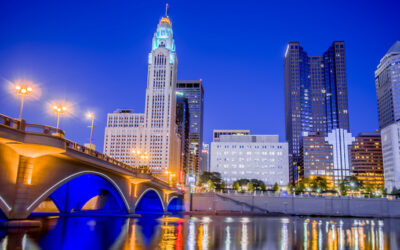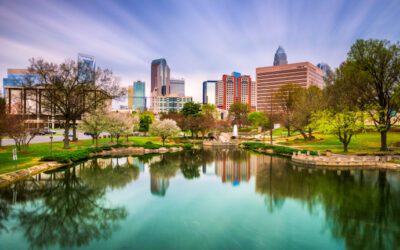There is no question. Austin, Texas is a great place to live…for some people.
While the state Capitol is occupied by mostly conservative lawmakers, the city is a liberal oasis in the reliably red Lone Star state. Delicious smoked meats, breakfast tacos, craft beer and cold brew abound. You can take in live music every day of the week, and always find a band that appeals to your tastes. You can canoe or kayak through downtown most of the year and wear shorts comfortably in January.
But that might not be enough for some people. Despite its charms, Austin has its drawbacks. Before you take that job offer or sign that lease, you should consider the many reasons why you shouldn’t move to Austin.
It’s more expensive than you think.
Austin is the 12th most expensive U.S. city to move to, according to a recent study.
Living expenses for the average mover’s first month in the city was about $1,533. That number factors in the cost to rent a 1-bedroom apartment, set up a phone, food and drink, and transportation. Moving expenses to Austin averaged $805.82 (based on a 155-mile move), which is more than San Francisco by more than $60. (By the way, most locals blame people moving from California for the rising prices
The average apartment rent is expected to climb 11 percent by 2020, according to Austin Culturemap, from $1,189 in 2016 to $1,376 in 2020.
Thinking of buying a house? Be ready to pay the price. The median list price for a home in Austin has increased more than 78 percent since December 2011, going from $210,000 to $375,000 in December of 2016 according to Zillow.
Where are all the affordable homes? In July Austin Board of Realtors president Aaron Farmer had this to say:
“The city of Austin’s high development costs make it virtually impossible for homes under $250,000 to be built within city limits. In return, this pent-up demand is driving home prices up in surrounding areas in where lower-priced housing stock can be built. The result is a catch-22 of housing development, where the homes that can be developed are largely in price classes where both prices and inventory are higher, while the much-needed housing stock under $250,000 goes un-replenished.”
While the skyrocketing cost of real estate is a major bummer for aspiring homeowners, there is a bright side. Austin actually has a lower cost of living compared to the national overall, according to PayScale.com, about 3 percent less overall. Austinites can expect to pay up to 13 percent less for utilities and groceries than the nation as a whole.
Cedar fever is the worst
If you are sensitive to pollen allergies and move to Austin, prepare to suffer from “cedar fever” from December to March.
What exactly is cedar fever? Here is how Texas Monthly describes it:
“But cedar fever is not just any allergy. It’s a scourge, a plague that smites the just and the unjust who have the misfortune to live anywhere in a broad strip of Central Texas that stretches from the Red River to the Rio Grande.”
Yikes.
Actually, cedar fever is an allergy to the pollen of the Ashe juniper tree, which grows in abundance around central Texas. While not really a cedar tree, it is also known as Mountain cedar. Allergic reactions to this particular pollen grain can mimic the symptoms of the flu: inflammation, fatigue, headaches, clogged sinus and eye irritation.
The 2017 cedar season has been declared the worst on record by local allergists, including Dr. Robert Cook of Central Texas Allergy & Asthma. Cook told local news network KXAN that even people who haven’t experienced allergies before can develop them with one to six years of arriving in Austin.
This year could be especially bad for newcomers to Central Texas. Often, people who have only been in this area from 1-6 years don’t see cedar effects. But on a bad year like this one, Dr. Cook says it’s possible that more people who would be prone to the allergen could develop full allergies to cedar.
You’ll spend too much time sitting in traffic.
If you are coming from Washington D.C., Los Angeles or New York then traffic in Austin will seem like a cake walk. But it is still bad.
A recent Texas A&M study said the city has the 10th worst traffic in the United States. The Texas Department of Transportation declared that the stretch of I-35 running through downtown Austin as being the second most congested roadway for regular drivers, and the most congested for truck drivers.
TomTom is a bit kinder when it comes to ranking Austin’s traffic woes. The GPS maker ranked Austin as the 21st most congested city in the country overall, according to the annually reported TomTom Traffic Index. When it comes to evening peak hours, Austin is the 15th worst in the country, with travel taking 57 percent longer than it does in free flowing traffic. Peak morning traffic is even worse, coming in at 14th overall.
One reason for this is that Austin lacks a true bypass route that routes drivers around the city that are traveling through on I-35. The other major interstate, the MoPac Expressway, also runs north and south. A new HOV toll lane on the MoPac has done little to improve commute times. With more than 100 people moving to Austin everyday, the traffic situation keeps getting worse and worse.
It’s not as weird as it once was.
If you’re thinking about moving to Austin, you’ve probably come across the motto: “Keep Austin Weird”
While Austin’s weirdness has been on display for decades, the phrase was first coined in 2000 by local librarian Red Wassenich, according to NPR affiliate KUT.
In a recent story, KUT examined the very question: Is Austin really that weird anymore?
Many folks chimed in saying that as Austin has grown in population it has started to shed its weird factor. Here is one opinion from that article:
“Something that could have been seen as weird years ago: ‘Wow! Houses converted into bars, how unique.’ Meanwhile, now it’s just home to huge apartment complexes being developed, gridlock with ridesharing cabs. Everyone knows about it, so it’s far less weird.”
Sure, we still have lots of quirky food trucks and a surplus of music venues to satisfy fans of any genre. But any of Austin’s most iconic symbols of its quirkiness are in danger of being lost to development, including a collection of boutiques and a record store called Slackerville and the city’s graffiti park is in search of a new home to make way for a development.
You’ll grow to hate SXSW.
Many people first experience Austin coming into town for South by Southwest and fall in love. But when you are a local, the seemingly endless comedy, tech, film and music festival, will become the bane of your existence. From screwing up your daily commute, making it impossible to pop in to your regular coffee spot in East Austin, to instilling a crippling sense of daily FOMO that you can’t escape—you will start scheduling your vacations in March just to get away.
The same also goes for Austin City Limits Festival, the music festival held every fall in Zilker Park. It is a rite of passage for every new Austinite to attend. But eventually you’ll be avoiding the area and the throngs of out-of-towners that descend upon “The Live Music Capital of the World” for two weekends of trendy bands. But if that is your thing, it is one of the best music festivals in the country.
But its not all bad!
All that said, there are still a lot of good reasons to move to Austin. Every major city has its drawbacks and it is good to know them all before you make the plunge. On the flip side, there are still many good reasons to come here. You will be mesmerized by the natural beauty of the surrounding Hill Country. Employers like Apple, University of Texas, Dell and HomeAway offer exciting career opportunities. You will eat some of the best barbecue you’ve ever had (and you don’t have to wait two hours at Franklins to get it)
So, if you’re still raring to get here, we’d be happy to have you. Get ready for your move by checking out all of our tips on moving to Austin here.


